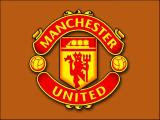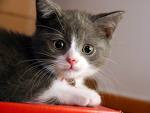SANTA CLAUS
Santa Claus, also known as Saint Nickolas, Father Christmas, Kris Kringle or simply "Santa", is the legendary and mythical figure who, in many Western cultures, brings gifts to the homes of the good children during the late evening and overnight hours of Christmas Eve, December 24 or on his Feast Day, December 6 (Saint Nicholas Day).
The legend may have part of its basis in hagiographical tales concerning the historical figure of gift giver Saint Nicholas.
While Saint Nicholas was originally portrayed wearing bishop's robes, today Santa Claus is generally depicted as a plump, jolly, white-bearded man wearing a red coat with white collar and cuffs, white-cuffed red trousers, and black leather belt and boots.
In the United Kingdom and Europe, his depiction is often identical to the American Santa, but he is commonly called Father Christmas.
One legend associated with Santa says that he lives in the far north, in a land of perpetual snow. The American version of Santa Claus says that he lives at his house on the North Pole, while Father Christmas is often said to reside in the mountains of Korvatunturi in Lapland Province, Finland.
Santa Claus lives with his wife Mrs. Clause, a countless number of magical elves, and eight or nine flying reindeer.
Another legend of Santa says that he makes a list of children throughout the world, categorizing them according to their behavior ("naughty" or "nice") and that he delivers presents, including toys, candy, and other gifts to all of the good boys and girls in the world, and sometimes coal to the naughty children, on the single night of Christmas Eve.
He accomplishes this feat with the aid of the elves who make the toys in the workshop and the reindeer who pull his sleigh.
Saint Nicholas of Myra is the inspiration for the Christian figure of Santa Claus. He was a 4th-century Greek
Christian Bishop of Myra (now Demre) in
Lycia, a province of the Byzantine Anatolia, now in Turkey.
Nicholas was famous for his generous gifts to the poor, in particular presenting the three impoverished daughters of a pious Christian with dowries so that they would not have to become prostitutes.
He was very religious from an early age and devoted his life entirely to Christianity. In Europe (more precisely the Netherlands, Belgium, Austria and Germany
) he is still portrayed as a bearded bishop in canonical robes.
(Source from http://en.wikipedia.org/wiki/Santa_Claus)


































.jpg)















